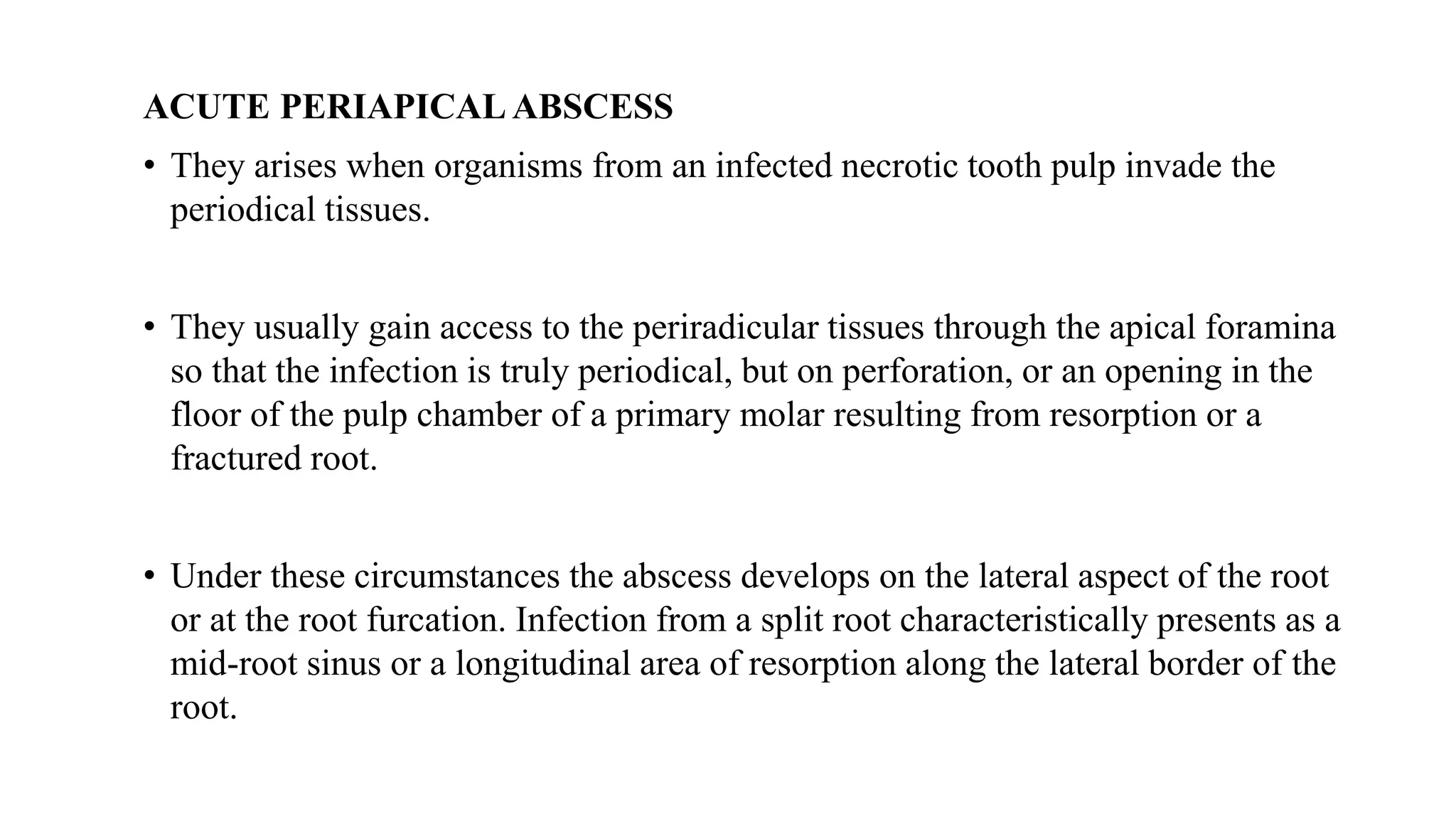Odontogenic infections are common infections of the head and neck region that originate from dental sources. While most can be managed with antibiotics and tooth extraction, some can cause serious complications. Virulence factors of bacteria and host resistance determine whether an infection occurs. Acute infections are usually caused by aerobic bacteria while chronic infections involve anaerobes. Infections can spread locally through tissue spaces from individual teeth along pathways like the canine space or maxillary sinus. Timely treatment is important to minimize complications.


















































































